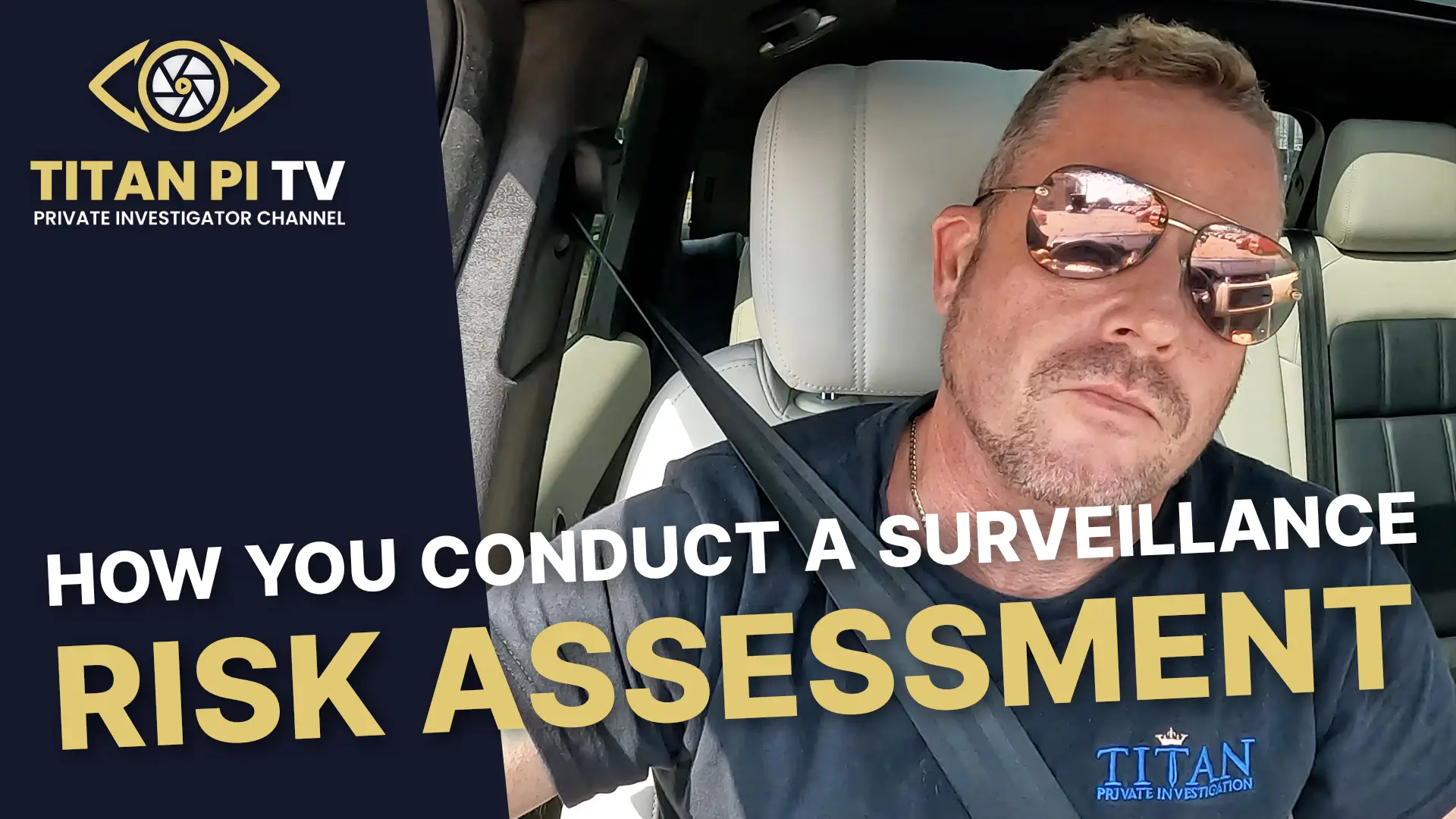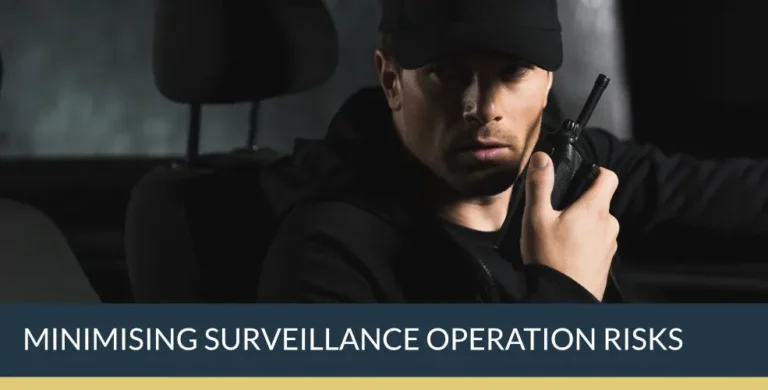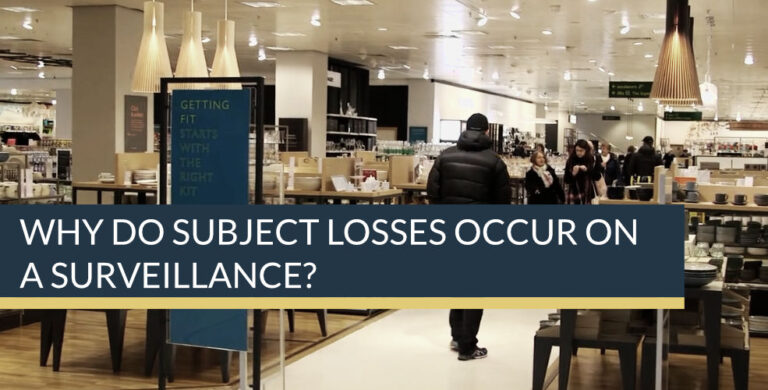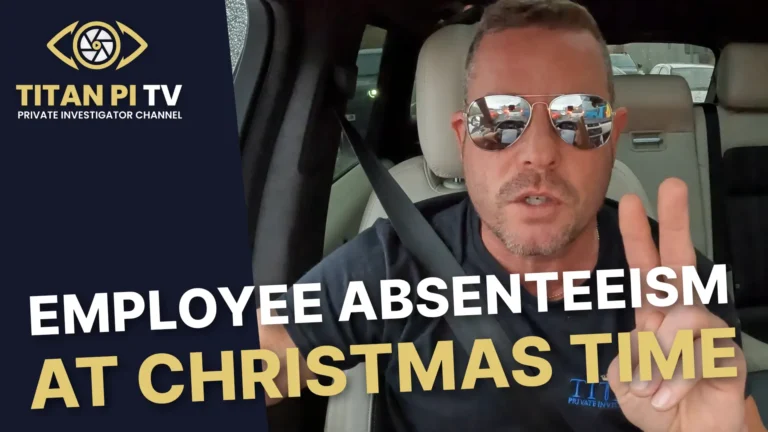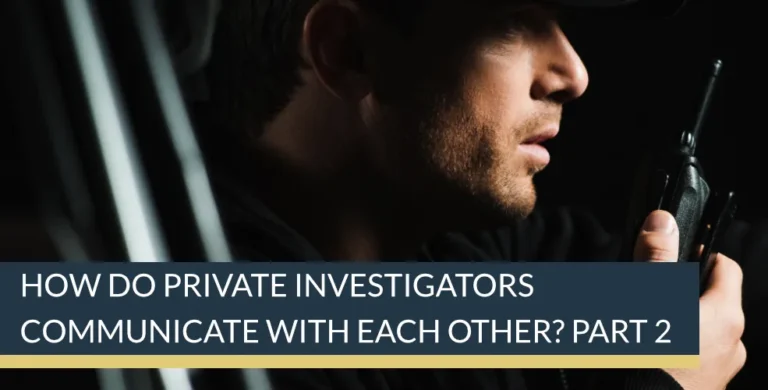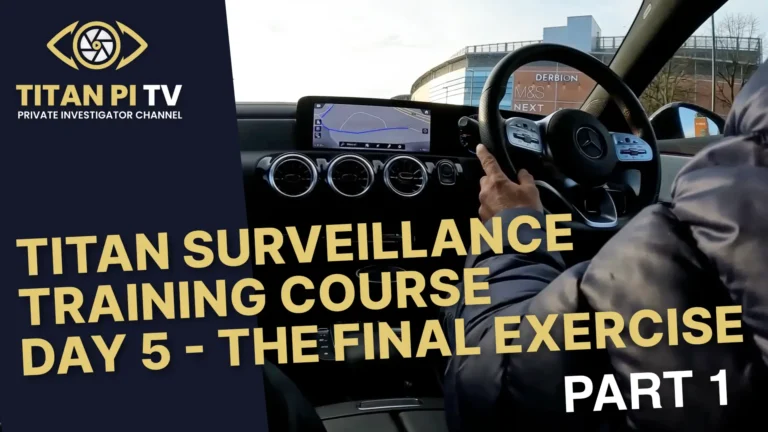How do you conduct a surveillance risk assessment?
Inside the Art of Surveillance with Titan PI TV
In the latest episode of Titan PI TV, Simon Henson, Managing Director of Titan Private Investigation Limited, takes viewers behind the scenes of the high-stakes world of private investigation. This week’s focus: the critical process of conducting a surveillance risk assessment. As the demand for professional surveillance grows across the UK, understanding how to assess and mitigate risks before any operation is more vital than ever.
The Expanding Reach of Titan Private Investigation
Broadcast from Titan’s Derby headquarters, Simon Henson opens the episode with a warm welcome, reminding viewers that Titan now operates from ten offices, stretching from Truro in the southwest to Manchester in the northwest. This national presence underlines the firm’s reputation as one of the UK’s leading investigation agencies, trusted by clients ranging from private individuals to major corporations.
For those who prefer audio, Henson notes that Titan PI TV is also available as a podcast, ensuring that the agency’s expertise is accessible wherever and whenever it’s needed.
Why Risk Assessment is the Bedrock of Surveillance
The heart of this episode is a deep dive into the risk assessment process that underpins every successful surveillance operation. Henson is unequivocal: “A surveillance risk assessment needs to be done before every deployment.” This is not just best practice—it is essential for the safety of operatives, the subject, and the integrity of the investigation itself.
But what does a surveillance risk assessment actually involve? Henson breaks it down with clarity, drawing on real-world examples and the tried-and-tested methods used by Titan’s operatives.
The Risk Calculator: Quantifying Danger
At the core of Titan’s approach is the risk calculator, a tool that quantifies risk using a simple but effective formula:
Risk = Severity × Likelihood
Severity is rated on a scale from 1 to 5, where 1 is minor and 5 is critical. Likelihood is similarly rated, from 1 (remote or rare) to 5 (highly probable or almost certain). By multiplying these two factors, investigators arrive at a risk score that determines whether an operation can proceed, and if so, what additional precautions are required.
Step One: Identifying Hazards
The first step in any risk assessment is to identify potential hazards. Henson explains, “Is there anything that may cause harm to the surveillance team or the subject?” This could range from environmental dangers, such as hazardous locations, to the behaviour of the subject themselves.
For example, if a subject is known to be surveillance-aware—meaning they have experience in detecting or evading surveillance—this immediately raises the stakes. The risk is not just of the operation being compromised, but of direct confrontation or even violence.
Step Two: Assessing Who Might Be Harmed
Once hazards are identified, the next question is: who is at risk? This could include the surveillance team, the subject, or even members of the public. The assessment must consider all possible outcomes, from minor injuries to severe incidents.
Step Three: Evaluating the Risk
With hazards and potential victims identified, the risk calculator comes into play. Henson provides a practical example: suppose a subject has previously detected surveillance but has not caused harm. The severity might be rated as ‘major’ (3), and the likelihood as ‘probable’ (4), resulting in a risk score of 12. On Titan’s risk matrix, this is an ‘amber’ rating—meaning the operation cannot proceed without further mitigation.
Step Four: Implementing Control Measures
The next step is to reduce the risk to an acceptable level. In the example above, Henson suggests deploying a tracking device on the subject’s vehicle. This allows the surveillance team to monitor movements without maintaining a constant visual presence, thereby reducing the chance of compromise.
After implementing this measure, the severity might drop to ‘moderate’ (2) and the likelihood to ‘possible’ (3), resulting in a risk score of 6—now in the ‘green’ zone, where the operation can proceed safely.
When the Risk is Too High
Not all risks can be mitigated. Henson recounts a scenario where a surveillance-aware subject has previously confronted operatives and even brandished a knife. Here, the severity is ‘critical’ (5) and the likelihood remains ‘probable’ (4), resulting in a risk score of 20—deep in the ‘red’ zone.
In such cases, even with measures like body armour or advanced tracking, the risk may remain unacceptably high. The only responsible decision is to abort the operation. “We might not always be able to put measures in place to reduce it to a safe level,” Henson notes, underscoring the importance of professional judgement and ethical responsibility.
Documenting the Assessment
A thorough risk assessment is not just a mental exercise—it must be meticulously documented. Titan’s risk assessment form includes columns for the identified hazard, existing control measures, and any additional controls introduced as the situation evolves.
This documentation serves multiple purposes: it protects the agency and its operatives, provides a clear record for clients, and ensures that all decisions are transparent and justifiable.
The Dynamic Risk Assessment: Adapting in Real Time
Surveillance is rarely static. Situations can change rapidly, and new hazards may emerge without warning. That’s why Titan employs a dynamic risk assessment process, led by the team leader or a senior operative.
As Henson explains, “The dynamic risk assessment is usually done by the team leader or a senior person on the surveillance team who is running it. This will be things that come up as hazards during the surveillance and they need to be documented.”
For example, if an unexpected event occurs—such as the subject changing their routine or an unforeseen confrontation—the team must reassess the risks on the spot, implement new control measures, and document their decisions. This fluid, responsive approach is essential for maintaining safety and operational effectiveness.
The Importance of a Risk Assessment Culture
Throughout the episode, Henson emphasises that risk assessment is not a box-ticking exercise. It is a culture—a mindset that prioritises safety, professionalism, and ethical conduct. “If you don’t do risk assessments, you need to start doing them,” he urges, addressing both industry peers and aspiring investigators.
By embedding risk assessment into every stage of an operation, agencies like Titan protect not only their own teams but also their clients and the wider public. It is this commitment to best practice that sets leading agencies apart in a competitive and often misunderstood industry.
The Broader Impact: Professionalism in Private Investigation
The episode concludes with a call to action: “Please give us a thumbs up. If you don’t want to miss further episodes, then please subscribe to the channel—it’s free. Until next time, be safe.”
But the message goes deeper. In an era where private investigation is sometimes portrayed as glamorous or even reckless, Titan PI TV offers a window into the real work of professional investigators. Risk assessment is not just about ticking boxes—it is about safeguarding lives, reputations, and the integrity of the investigative process.
Final Thoughts – Surveillance Risk Assessments
Simon Henson’s latest episode is a masterclass in the art and science of surveillance risk assessment. By demystifying the process and sharing practical examples, he provides invaluable insight for clients, industry professionals, and the public alike.
As the private investigation sector continues to evolve, the lessons from Titan PI TV are clear: professionalism, preparation, and a relentless focus on safety are the keys to success. Whether you are considering hiring an investigator or pursuing a career in the field, understanding the importance of risk assessment is the first step towards excellence.
What’s Next on Titan PI TV?
Thank you for reading, watching, or listening to this week’s blog post on Titan PI TV. For more expert advice and behind-the-scenes insights, subscribe to Titan PI TV on YouTube or download the Titan PI TV podcast wherever you get your podcasts. If you found this information helpful, please give us a thumbs up and subscribe to our channel. Stay tuned for more insights into the world of private investigations. Until next time, stay safe and keep learning!
Titan PI TV: Uncovering the Truth, One Investigation at a Time.

